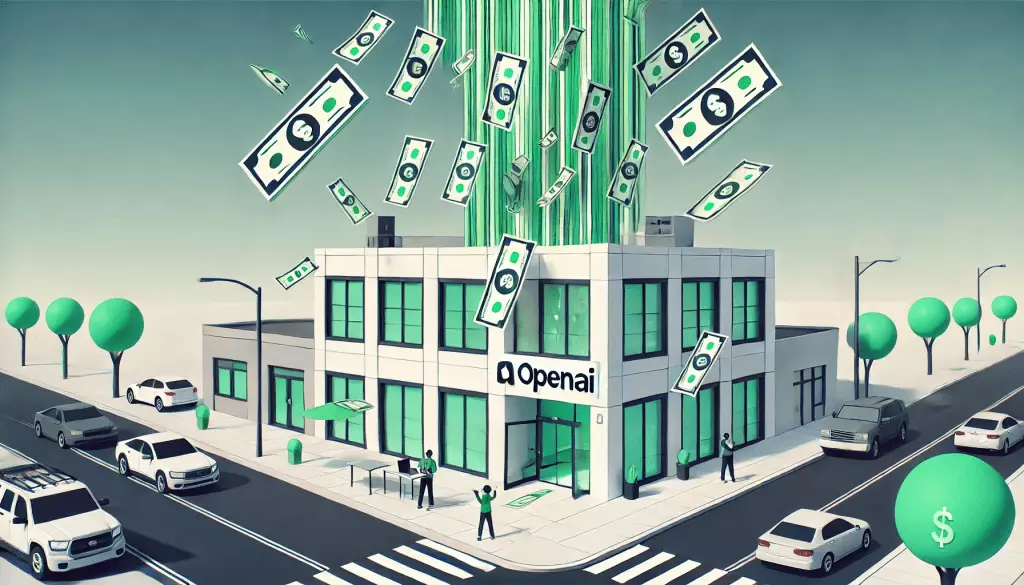The tech world has been closely watching OpenAI, especially as it navigates a turbulent period marked by executive shake-ups. The recent announcement of a staggering $6.6 billion in funding at a remarkable valuation of $157 billion has sent ripples across the industry. Beyond its sheer size, this funding round, touted as the largest venture capital tranche ever, raises questions about the sustainability and future direction of OpenAI amidst mounting external pressures and internal challenges.
Led by Thrive Capital and supported by prominent investors including Nvidia and Microsoft, the funding signifies an emphatic endorsement of OpenAI’s potential in the rapidly growing AI landscape. The company claims that ChatGPT alone boasts over 250 million weekly unique users, illustrating both the demand for its offerings and the massive footprint it has established in AI research and application. This financial infusion is intended to bolster OpenAI’s capabilities, allowing it to intensify its research endeavors, expand its computational resources, and develop tools aimed at solving complex problems.
However, the announcement did not come without its share of doubt. Critics, including noted industry commentator Ed Zitron, have voiced skepticism regarding OpenAI’s financial model and long-term viability. Zitron’s assessment holds weight: the company’s dependence on individual ChatGPT subscriptions rather than broader API usage or licensing could spell trouble in establishing a sustainable revenue model. This notion is further exacerbated by the apparent involvement of Softbank, a venture fund known for its precarious investments, raising flags about the stability of OpenAI’s future business strategies.
The Ominous Shadow of Competition
Furthermore, reports from The Financial Times have raised eyebrows, suggesting that one of the conditions for investors was an agreement not to fund rival firms like Anthropic or the recently formed xAI, led by Elon Musk. Such tactics signal a level of anxiety within OpenAI regarding its competitive positioning. Musk’s criticism of OpenAI as “evil” adds an element of complexity to the competitive landscape, further complicating OpenAI’s strategic maneuvering.
The AI field is burgeoning with innovation, with new organizations emerging and established giants like Google stepping up their game. Notably, Meta and Alibaba are also launching open-source models at no charge, making the competitive atmosphere hotter than ever. While OpenAI’s models currently dominate third-party performance benchmarks, this marathon is far from over. Competitors are not only in the race but are also developing capabilities that threaten to challenge OpenAI’s lead.
Internally, OpenAI appears to be wrestling with its own dynamics. The recent resignation of its former Chief Technology Officer, Mira Murati, raises questions about the organization’s internal cohesion and visionary direction. With significant leadership shifts occurring alongside financial windfalls, one can’t help but wonder how these factors will influence the company’s growth trajectory.
Moreover, the silence surrounding the anticipated revenue sharing from OpenAI’s custom GPT Store has also stirred curiosity. The concept of an AI app store—an innovative venture allowing users to create tailored ChatGPT experiences—promises a new revenue channel. OpenAI CEO Sam Altman hinted at impending revenue-sharing arrangements at the last developer conference, yet the actual implementation remains ambiguous. For developers, particularly those who have invested time in creating custom GPTs, clarity and reassurance on this front are vital.
Navigating the Future: Can OpenAI Maintain Its Edge?
Despite the skepticism and potential pitfalls, OpenAI seems poised to persevere. With its financial reserves now replenished, it appears well-positioned to continue rolling out new products and refining existing offerings. Significantly, this resilience could translate into stability for developers relying on OpenAI’s technology. With ongoing advancements and a commitment to addressing user needs, the company may very well solidify its status as a major player in the AI ecosystem.
Nevertheless, the coming months could prove crucial. Will OpenAI leverage its newfound capital effectively to stave off competition and maintain its dominance? Or will the external pressures and internal challenges ultimately hinder its progress? The answers will determine not only the course of OpenAI’s journey but the broader narrative of artificial intelligence’s evolution. As the excitement around AI continues to escalate, the spotlight on OpenAI remains bright, compelling stakeholders to watch closely as events unfold in this high-stakes game.


Leave a Reply